Why Sabi Sand Reserve Is South Africa’s Ultimate Private Safari Experience
When it comes to luxury safaris, few places match the reputation of Sabi Sand Game Reserve—a name synonymous with exclusivity, exceptional big cat sightings, and some of the finest safari lodges in Africa. Bordering the western edge of Kruger National Park, Sabi Sand offers access to the same prolific wildlife—but without the crowds—thanks to its private, carefully protected setting.
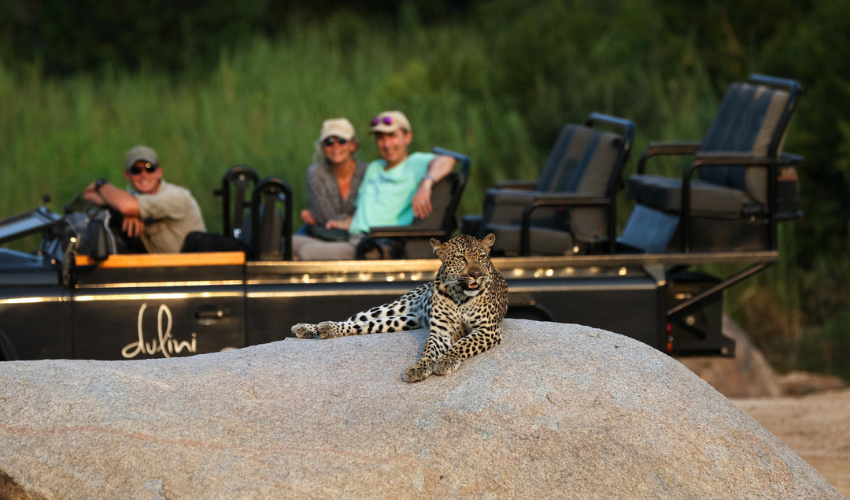
A Reserve of Reserves
Covering approximately 65,000 hectares (160,000 acres), Sabi Sand is not a single reserve but rather a collection of around 20 privately owned game reserves, each operating its own lodges and traversing areas. These reserves are unfenced from one another and share an open boundary with Kruger National Park, allowing animals to roam freely across this vast wilderness. This seamless integration means you get all the wildlife of Kruger—with far fewer people and vehicles.
Here are just a few of our favorite luxury reserves that make up the Sabi Sand mosaic:
-
Sabi Sabi Private Game Reserve – Known for its diverse ecosystems and four distinct luxury lodges (Bush Lodge, Little Bush Camp, Selati Camp, and Earth Lodge), this reserve blends tradition with modern design and conservation-focused hospitality.
-
Singita Sabi Sand – A prestigious 45,000-acre concession home to Ebony Lodge and Boulders Lodge, where bold architecture meets exceptional service, wine cellars, and riverfront suites.
-
Ulusaba Private Game Reserve – Owned by Sir Richard Branson, this reserve features Rock Lodge and Safari Lodge, offering panoramic views from a hilltop and stylish bush experiences below.
-
Dulini Private Game Reserve – A trio of intimate lodges (Dulini Moya, Dulini River, and Dulini Leadwood) famed for their understated elegance, warm hospitality, and expert tracking teams.
-
Londolozi Game Reserve – A pioneer in South African eco-tourism and leopard conservation, Londolozi features five camps, including Tree Camp and Granite Suites, and has remained family-run for over 90 years.
-
Lion Sands Game Reserve – Straddling both Sabi Sand and Kruger, Lion Sands is unique in offering dual access. Its flagship Ivory Lodge and River Lodge promise indulgent suites and riverside game viewing.
-
Cheetah Plains – An exclusive-use villa concept known for ultra-modern architecture, private chefs, and electric safari vehicles—ideal for families or groups seeking complete seclusion.
Each reserve operates with strict traversing rights, meaning the roads and sightings are limited to guests staying within that specific reserve, preserving the sense of exclusivity, space, and intimacy that defines Sabi Sand.
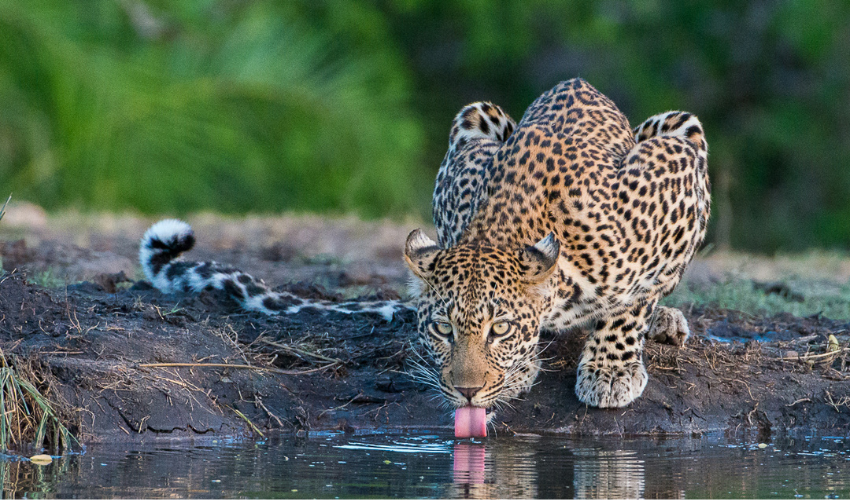
The Leopard Capital of Africa
Sabi Sand is arguably Africa’s premier destination for leopard sightings. Thanks to decades of responsible tourism and careful habituation, the leopards here are not only abundant but remarkably relaxed around vehicles. Guests can witness these elusive cats up close and unhurried, sometimes for long stretches as they lounge in trees, stalk through the bush, or tend to their cubs.
In most other parts of Africa, even catching a glimpse of a leopard can be considered a lucky break. But in Sabi Sand, daily sightings are common—making it a favorite among wildlife photographers and big cat enthusiasts.
What Makes Private Reserves So Special?
While Kruger National Park is one of the most iconic safari destinations on the continent, private reserves like those within Sabi Sand offer a suite of exclusive advantages that elevate the experience:
-
Off-Road Game Viewing – Unlike in national parks, guides in Sabi Sand can leave the road to track wildlife, allowing for closer, more flexible encounters.
-
Night Drives – After-dark safaris with a spotlight provide the rare chance to observe nocturnal predators, from lions on the hunt to porcupines and bush babies.
-
Strict Sightings Management – Only a limited number of vehicles are allowed at any animal sighting, ensuring unobstructed views and minimal disturbance.
-
Expert Guiding and Tracking – Guests benefit from highly trained rangers and Shangaan trackers, who offer insights into animal behavior and ecology far beyond the basics.
-
Restricted Access – Unlike public parks, access to each reserve is limited to paying guests, guaranteeing privacy and tranquility on every drive.
-
World-Class Lodging – Expect everything from plunge pools with a view of the bush, to spa treatments, wine cellars with curated wine lists, unique sleep-out experiences and candlelit dinners under the stars.
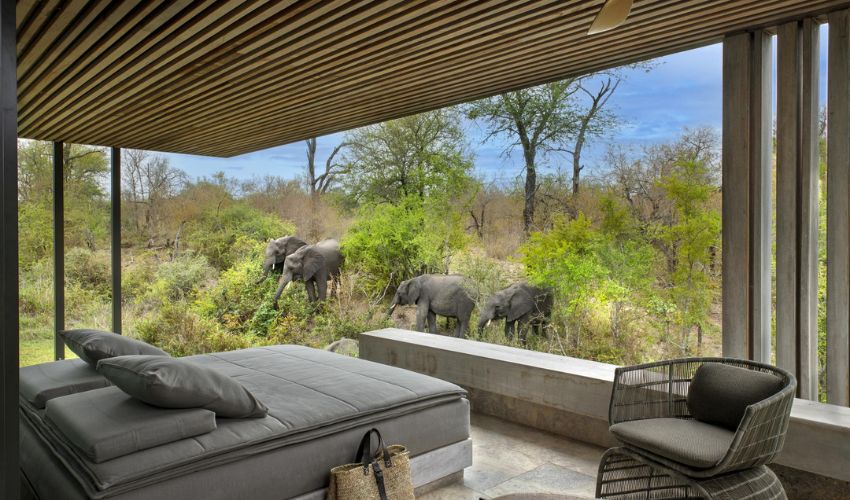
Ready to begin your journey to Sabi Sand?
Sabi Sand isn’t just a destination—it’s a benchmark for what safari should be: intimate, thrilling, and utterly indulgent.
Every lodge has its own personality—some are modern and sculptural, others earthy and romantic—but all are deeply connected to their environment and designed to immerse you in the magic of safari.
A stay at one of Sabi Sand’s premier lodges is an unforgettable experience—an iconic blend of untamed wilderness and elevated comfort. This region pairs effortlessly with Cape Town’s coastal charm and the dramatic beauty of Victoria Falls. With excellent flight connections, it’s an effortless way to experience Southern Africa’s most iconic highlights. Explore our Southern Explorer itinerary for inspiration—then let our safari specialists help you tailor the perfect Sabi Sand adventure for you.
My First Visit to South Africa
My first trip to South Africa was unforgettable, offering a rich blend of nature, history, culture, food, and wine. Traveling with a group of fellow travel professionals made it even more special, as we shared incredible moments — from exploring the many corners of Cape Town to enjoying an incredible safari in a private Kruger reserve. While it wasn’t my first African safari, it was everyone’s first visit to South Africa — making the experience even more exciting and meaningful.

Exploring Cape Town
Our journey began in Cape Town, a city rich in culture, natural beauty, and history. We stayed at the Cape Cadogan Hotel, an elegant boutique hotel on the corner of Kloof Street, one of Cape Town's most vibrant and stylish neighborhoods. The area is teeming with trendy restaurants, bars, and cafés—perfect for exploring the city’s culinary scene and nightlife. The hotel served an à la carte breakfast each morning, which we all looked forward to, and our dinner at Cape Cadogan was one of the best meals of the trip. The creative dishes were designed for sharing and were incredibly tasty—who knew smoked cabbage could taste so good?
We visited the famous Victoria & Alfred Waterfront, a lively spot with stunning views of Table Mountain. We strolled along the waterfront, indulged in fine dining, and shopped for souvenirs while soaking in the picturesque setting.
We also took a boat tour to Robben Island, where Nelson Mandela was imprisoned for 18 years. The tour was led by a former prisoner, which made the experience even more personal and unforgettable. He shared powerful stories about his time on the island and the fight for equality and democracy in South Africa. It was a humbling experience that deepened our understanding of the country’s history and resilience.
That evening, we dined at GOLD Restaurant, which offered a culinary safari featuring a 14-course tasting menu inspired by different African cuisines. The meal was accompanied by cultural performances, and everyone at the restaurant participated in a lively drumming session.

Cape Peninsula and Table Mountain
Our Cape Peninsula tour was a spectacular highlight. The dramatic cliffs and sparkling blue waters created a breathtaking coastline. We visited the Cape of Good Hope, a stunning rock outcrop often mistaken for the southernmost point of South Africa. Just a few minutes away is Cape Point with more incredible views from the lighthouse and lookout points. After lunch at Simon's Town, we visited Boulders Beach to see the colony of African penguins. Watching these adorable creatures waddling along the sand brought so much joy to our entire group.
Later that day, we took advantage of the clear afternoon skies to visit Table Mountain. It had been foggy in the morning, but by the afternoon, the weather was perfect—crystal clear with no wind. The views from the top were absolutely breathtaking, offering panoramic vistas of Cape Town, the ocean, and the surrounding mountains. The sunset cast a golden glow over the city, making the experience even more magical.

Winelands Adventure
Another day of adventure took us to the breathtaking Cape Winelands, about 90 minutes from Cape Town. The region’s rolling vineyards and charming towns created the perfect setting for relaxation and indulgence. We explored Franschhoek, sampled wines at two popular wineries, and enjoyed a delicious al fresco lunch. At Rickety Bridge Winery, we even tried our hand at wine blending—the results were mixed, but everybody had a good time.

Arriving at Kruger Private Reserve
After exploring Cape Town, we flew to Skukuza Airport in the Greater Kruger area, where our guides from Tinga Lodge met us. Located in the Lion Sands Private Game Reserve, Tinga is just a few minutes from the airport and perfectly positioned on the banks of the Sabie River. From the lodge, we enjoyed stunning views of elephants, hippos, and other wildlife gathering to drink or cool off. Being in a private reserve within Kruger allowed us to experience intimate safari drives without the crowds of the national park. We also enjoyed extended evening game drives with picturesque sundowners and had the opportunity to explore off-road for closer wildlife encounters.
The accommodations were spacious and elegantly designed, with each room featuring a private plunge pool overlooking the river—a perfect spot to unwind after a game drive. The dining was exceptional, with all meals and drinks included. The complimentary laundry service was a thoughtful touch, especially after a few warm days on safari.

Safari Adventure in Kruger
Our days began early with a quick coffee and pastries before heading out for a game drive around 5:30 AM. The African sunrise over the savannah was magical. We were led by Dre, our expert guide, and Wanted, our tracker, who were always on the lookout for wildlife. Their skill and knowledge made every drive exciting and full of surprises.
We saw lions, giraffes, leopards, elephants, baboons, kudus, impalas, zebras, and even an elusive leopard. The chance to see these majestic creatures up close in their natural habitat was truly amazing. Along the way, we stopped for a coffee break in the bush and to stretch our legs.

After the morning drive, we returned to the lodge for a hearty breakfast and some downtime. The lodge’s pool and spa were the perfect place to unwind between drives. The spa treatments left us feeling rejuvenated, and we enjoyed the outdoor spaces, watching for wildlife from our lounge chairs.
In the afternoon, we set off for another game drive, ending with a sundowner—watching the sun dip below the horizon while sipping on cocktails. One evening, we had an exhilarating encounter with a white rhino by the river. As the rhino approached, we had to back away for safety, but our luck held—we saw the same rhino the next day, walking right by the road. It was an unforgettable moment.

A Perfect First Trip to Africa
South Africa is a land of striking contrasts, where vibrant cities meet breathtaking wilderness, and every moment is filled with excitement and discovery. It's no surprise that it's the top choice for first-time safari-goers, offering a mix of incredible experiences in some of the most luxurious settings. Our South African adventure was a dream come true for everyone in our group, leaving us with memories we'll cherish forever.
Ready for your first South African adventure? Browse our selection of suggested South Africa Itineraries for inspiration. Reach out to us to create your dream journey.
Top 10 Kenya Experiences You Can't Miss
Kenya is a land of breathtaking landscapes, rich cultures, and extraordinary wildlife. From the sprawling savannahs of the Maasai Mara to the pristine beaches of the Indian Ocean, Kenya offers an array of experiences that will leave a lasting impression. Here are the top 10 Kenya experiences that should be on every traveler’s bucket list.
1. Witness at the Great Migration
The Great Migration is one of the world’s most awe-inspiring natural events, when over 1.5 million wildebeest, along with zebras and gazelles, journey through the Serengeti and into the Maasai Mara in search of fresh grazing. The migration reaches the Mara from July to October, with dramatic river crossings at the Mara River as crocodiles and predators wait for their chance. Watching this powerful display of survival and instinct is one of Kenya's most sought-after safari experiences. Our World’s Greatest Show and Safari offers an incredible opportunity to witness this spectacular event alongside other highlights of Kenya and Tanzania.
2. Experience Year-Round Wildlife Viewing in the Maasai Mara
The Maasai Mara offers some of the best year-round wildlife viewing in Africa. It is home to the highest concentration of lions in Africa and one of the richest predator populations. Lions, leopards, and cheetahs are consistently spotted hunting plains game like zebras, gazelles, and topi. Elephants and buffalo are common sightings, and the Mara is home to over 450 bird species. The contrast between the dry and green seasons creates different viewing experiences, making it a destination that rewards repeat visits.

3. Soar Above the Mara on a Hot Air Balloon Safari
A hot air balloon safari over the Maasai Mara at sunrise offers a breathtaking view of the vast plains and abundant wildlife. Glide silently over herds of elephants, giraffes, and antelopes, and finish the experience with a champagne breakfast in the bush — an unforgettable perspective of Kenya's wilderness.
4. Spot the Samburu Five
Northern Kenya’s Samburu region is a dramatic, untamed landscape home to the elusive Samburu Five—Grevy’s zebra, reticulated giraffe, Somali ostrich, Beisa oryx, and the gerenuk, a long-necked gazelle known for its ability to stand on its hind legs to browse from trees. Samburu and Shaba National Reserves are prime locations to spot these rare species, while the exclusive Namunyak Conservancy offers an even more secluded safari experience. Here, visitors can encounter not only the Samburu Five but also leopards, African wild dogs, lions, impalas, greater kudus, and an array of birdlife—all in a pristine, community-supported conservation area.
Our Captivating Kenya itinerary pairs a luxury Maasai Mara safari at Mahali Mzuri Camp, Sir Richard Branson's renowned property, with an intimate stay at Sarara Treehouses in Namunyak, offering an exclusive experience in Kenya’s most iconic destinations.
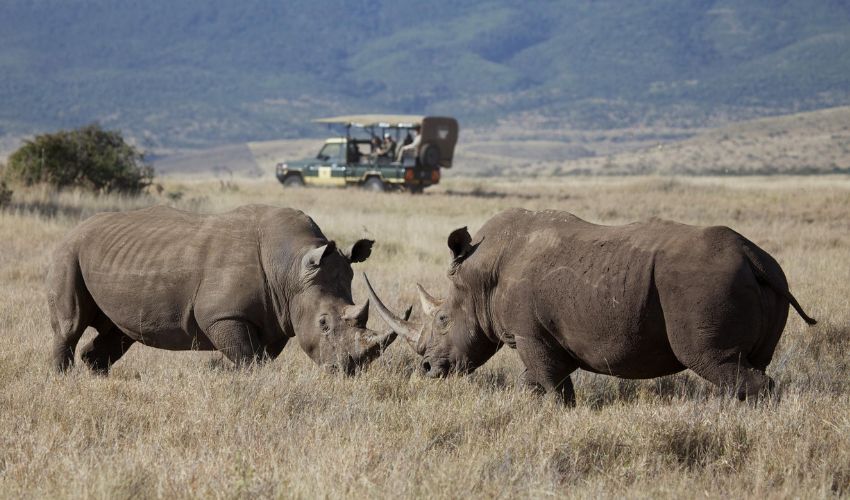
5. Explore Laikipia's Wildlife Conservancies
Laikipia is a hidden gem in central Kenya, offering a more intimate, private safari experience. The region is home to several luxury lodges and exclusive wildlife conservancies, including Lewa Wildlife Conservancy and Loisaba Conservancy, where you can enjoy game drives, horseback riding, and walking safaris. Laikipia is also at the forefront of rhino conservation, with both black and white rhinos thriving in these protected areas. The stunning landscapes of Laikipia, with its wide-open plains and dramatic scenery, provide a breathtaking backdrop for wildlife encounters. Visitors have the opportunity to witness conservation efforts up close, meet with rangers, and learn about the incredible tracker dogs assisting in protecting endangered species.
6. Discover Amboseli National Park’s Giants
Amboseli National Park is famous for its expansive views of Mount Kilimanjaro, Africa's highest peak. The park is home to large herds of elephants and offers incredible opportunities for wildlife photography. Visit during the dry season for the best views of Kilimanjaro, framed by golden plains and dotted with wildlife.
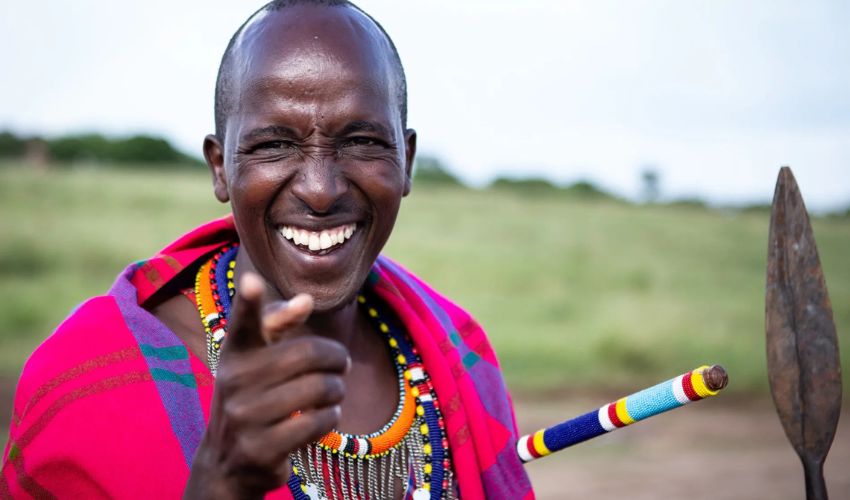
7. Marvel at the Flamingos at Lake Nakuru
Lake Nakuru, located in the Great Rift Valley, is renowned for its vibrant population of flamingos that create a pink hue along the lake’s shore. The surrounding national park is also a sanctuary for rhinos and other wildlife, making it an excellent spot for birdwatching and game drives.
8. Connect with the Maasai People
To truly understand Kenya's heart, immerse yourself in Maasai culture. Spend time with a Maasai tribe in their traditional villages, learning about their customs, ceremonies, and lifestyle. Engage in activities like dancing, beadwork, and the famous Maasai jumping dance. This experience offers a rare, authentic glimpse into one of Africa's most fascinating cultures.
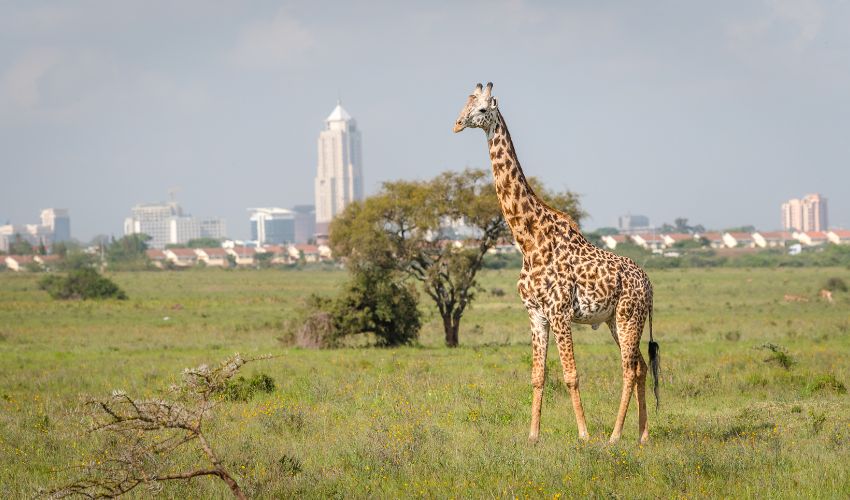
9. Explore Nairobi's Wildlife and Culture
Kenya’s vibrant capital, Nairobi, blends modernity with rich history. Visit the Nairobi National Park, the only wildlife park located within a city, where you can spot rhinos, lions, and giraffes against the backdrop of the city skyline. Explore the Karen Blixen Museum, the former home of the "Out of Africa" author, to gain insight into Kenya’s colonial past and literary history. The David Sheldrick Wildlife Trust, which rescues and rehabilitates orphaned elephants, is another must-see for animal lovers.
10. Relax at Diani Beach
For a coastal retreat, Diani Beach is one of Kenya's finest. With its powdery white sand, clear turquoise waters, and luxurious beachfront resorts, Diani is perfect for those looking to unwind after a safari. Snorkeling, diving, and water sports are all on offer, along with a laid-back vibe that's perfect for relaxation.
Kenya is a destination brimming with unforgettable experiences, from its incredible wildlife to its dramatic landscapes. With so much to see and do, it can be difficult to fit everything into one trip. However, no matter when you visit, Kenya offers year-round wildlife viewing and the timeless charm of its "Out of Africa" atmosphere. The Maasai Mara is the highlight of any itinerary, offering world-class safari experiences and abundant wildlife. For a more exclusive and intimate adventure, the luxury lodges and camps of Laikipia and Samburu will complete your journey, immersing you in the wild beauty of the region. Whether it's your first time to Africa or you're a seasoned traveler, Kenya never disappoints. Browse our Kenya safari itineraries for inspiration and start planning your adventure of a lifetime.






